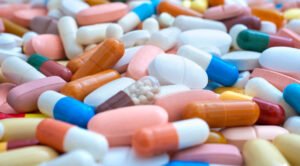Bipolar I Disorder: Most Recent Episode Manic Diagnosis: Most Essential Features
In order to have a bipolar I disorder diagnosis, it is absolutely essential to have at least one episode of mania. This manic episode will need to last at least a week, almost every day with symptoms present most of the time. During this period of mania, you will experience a high level of energy along with an elevated, irritable or expansive mood. Many individuals also experience an increased level of goal-directed behaviors. These behaviors need to be much more pronounced than normal, usual behaviors. If the mood is only irritable you may experience the following symptoms: the need for sleep; pressured speech or abnormally talkative; flight of ideas and racing thoughts; inflated sense of self-esteem or grandiosity; difficulty concentrating and easily distracted; major increase in psychomotor agitation or goal-directed activity associated with work, social, sexually related and possibly a significant increase in behaviors that could be riskier and result in severe negative consequences.
Additionally, individuals experiencing bipolar I disorder frequently also have histories of major depressive and hypomanic episodes, but it is not essential. Although many people believe that bipolar I disorder involves rapid mood swings, frequently that does not occur. Changes from mania to depression or hypomania could go on for weeks, months or longer. They may resolve to be followed by additional episodes at a later point in time.
Bipolar I Disorder: Most Recent Episode Manic-Special Considerations:
Bipolar I most recent episode manic have some special concerns in that it can be an extremely dangerous mood at times. Some research has found that as many as 25% to 50% of individuals who have a diagnosis of bipolar I disorder eventually attempt suicide.
Individuals experiencing a manic episode often become involved in very risky behavior. Some of these experiences can even be life-threatening. Clinicians working with patients having bipolar I mood episodes need to be very aware of the risks involved in that they need to make it a part of their work with clients to make risk assessments and have crisis planning.
The healthcare costs associated with bipolar I disorder are very high. Some research has found that bipolar I disorder results in three times higher cost than among other individuals because of the increased level of hospitalization, visits to doctors and the expense of medications.
Bipolar I Disorder: Most Recent Episode Manic-Psychological Treatment and Medications
Bipolar I disorder requires lifelong management of symptoms. Fortunately, there are effective treatments that can help you or your loved ones to have a relatively normal life. Medications are available to stabilize mood and psychosocial treatments are available. Research has found that some of the more effective treatments include the combination of medications along with psychological interventions. Some of the more effective psychological interventions for the treatment of bipolar I disorder include cognitive behavioral therapy, psychoeducation, family-focused therapy, and interpersonal social rhythm therapy.
The specific criteria for bipolar I disorder most recent episode manic follow:
Basic Bipolar I Disorder Diagnosis Criteria
A. Criteria have been met for at least one manic episode.
B. The occurrence of the manic and major depressive episode or episodes is not better explained by schizoaffective disorder, schizophrenia, schizophreniform disorder, delusional disorder, or other schizophrenia spectrum and other psychotic disorders.
Manic Episode;
A. A distinct period of abnormal and persistent, elevated, expansive or irritable mood, and abnormal and persistent increased goal directed activity or energy. This must last for at least a week and be present most of the day, nearly every day.
B. During this period of mood disturbance with increased energy or activity, three (or more) of the following symptoms (except for if the mood is only irritable) and are to a significant degree and must be a noticeable change from your usual behavior.
1. Inflated self-esteem or sense of grandiosity.
2. A decreased need for sleep such as feeling rested after only three hours of sleep.
3. More talkative than usual or a sense of pressure when talking.
4. Racing thoughts and flight of ideas.
5. Easily distracted.
6. Increase in goal-directed activity socially, at work or school, or sexually, or psychomotor agitation.
7. Excessive involvement in negative or high-risk situations such as engaging in unrestrained buying sprees, uninhibited sexual indiscretions, or foolish business investments.
C. The disturbance must be severe enough to cause significant impairment in social or occupational functioning, or to result in hospitalization to prevent harm to yourself or others, or if there are psychotic features present.
D. The episode cannot be attributed to the physiological effects of a substance such as a specific drug of abuse, a medication or other treatment or another medical condition.
Note: A full manic episode that emerged during antidepressant treatment or electroconvulsive therapy. Manic symptoms significantly at a level beyond the actual physiological effect of that treatment may be sufficient evidence for a manic episode and therefore of a bipolar one diagnosis.
Note: Criteria A-D above constitute a manic episode. At least one lifetime manic episode is required for the diagnosis of bipolar I disorder.
Coding for Specific Bipolar I Diagnoses:
The diagnostic code for bipolar I diagnosis are 296. _ _ (F31. _ _). The specific diagnosis and the related coding is based upon the current or most recent episode only. Mental health clinicians also need to consider and specify the severity, whether psychotic features are present, whether the client is in partial or full remission.
Some information adapted by Paul Susic Ph.D. Licensed Psychologist from the Diagnostic And Statistical Manual of Mental Disorders Fifth Edition DSM-5



